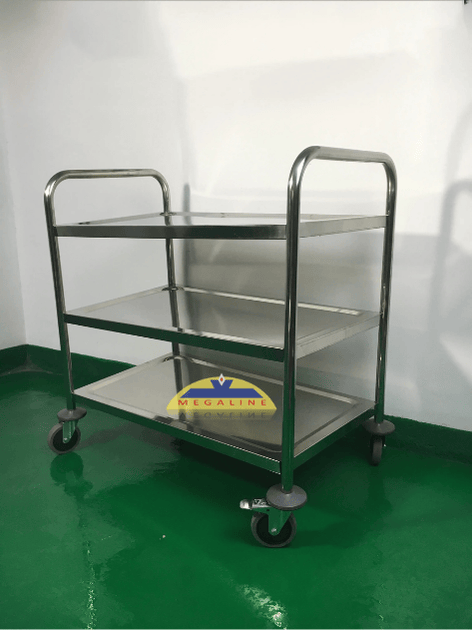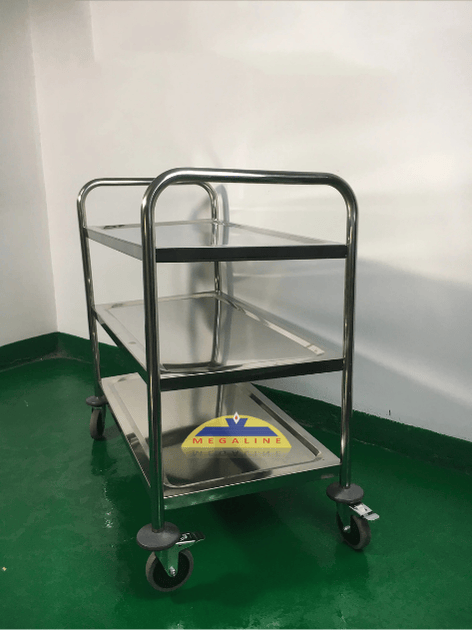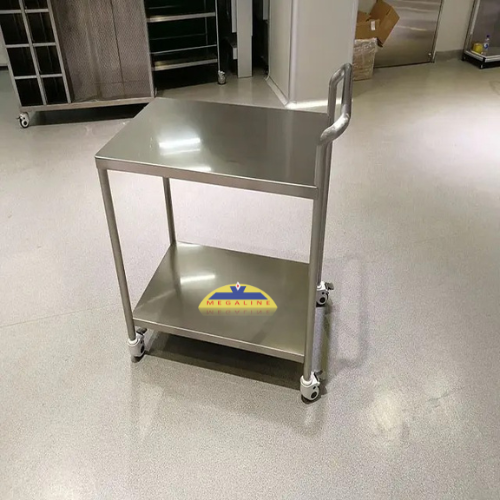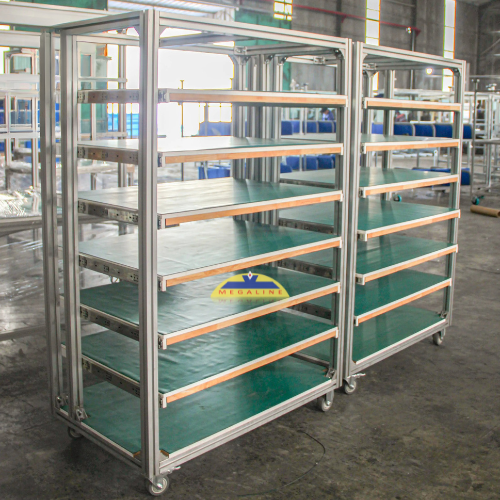DA NANG: 126 Dien Bien Phu, Thanh Khe, Da Nang
HO CHI MINH: 140 Vo Van Kiet, District 1, Ho Chi Minh
DA NANG: 126 Dien Bien Phu, Thanh Khe, Da Nang
HO CHI MINH: 140 Vo Van Kiet, District 1, Ho Chi Minh
Cleanroom trolleys are specialized equipment designed with anti-static and dust-resistant materials to ensure maximum safety and hygiene in cleanroom environments such as pharmaceutical, electronics, and semiconductor factories.
Cleanroom trolleys are essential equipment used in environments with strict cleanliness control requirements, such as laboratories, electronic component manufacturing plants, pharmaceutical and food production facilities, and hospitals. These environments require the utmost restriction of dust, bacteria, and contaminants, so cleanroom trolleys must be designed with stringent standards.
Cleanroom trolleys are typically made from high-quality materials such as 304 stainless steel, 316 stainless steel, or anti-static ABS plastic. These materials not only ensure high durability and corrosion resistance but are also easy to clean, non-dust-adhering, and minimize bacterial growth.
The trolleys have a lightweight and compact design, making them easy to move in limited spaces. Cleanroom trolleys usually come in various sizes, from small types used in laboratories to larger ones used in manufacturing plants.
The wheels are made from anti-static materials such as PU or special rubber, which helps minimize the risk of electrostatic discharge in electronic component or pharmaceutical production environments. Additionally, the wheels have a high load-bearing capacity, move flexibly, and do not scratch cleanroom floors.
The trolley frame is usually firmly processed with high load-bearing capacity. Some models can withstand loads up to several hundred kilograms, suitable for transporting large quantities of goods in clean environments.
Cleanroom trolleys are designed with smooth surfaces and no sharp corners to minimize dust accumulation. This makes cleaning and maintaining the trolleys easier, ensuring they always meet cleanliness standards during use.


Cleanroom trolleys play a crucial role in the pharmaceutical industry, helping to transport raw materials, medicines, and medical equipment safely without affecting product quality.
Factories producing microchips and electronic components require strict control of electrostatic discharge and dust. Cleanroom trolleys help transport goods without affecting sensitive components.
Ensuring food safety is a critical criterion in the food production industry. Cleanroom trolleys help transport raw materials and finished products without causing bacterial contamination or cross-contamination.
Medical facilities, hospitals, and laboratories use cleanroom trolleys to transport test samples, medicines, and medical equipment, ensuring sterility and absolute safety.


See more:
Cleanroom trolleys are the optimal transportation solution in special environments that require strict control of dust, bacteria, and static electricity. Choosing the right trolley not only improves work efficiency but also ensures safety and hygiene standards in production. Therefore, before deciding to buy a cleanroom trolley, carefully consider factors such as material, design, load capacity, and safety standards to get the most suitable product.
Megaline is a leading supplier specializing in various types of industrial trolleys with diverse models and load capacities, meeting all transportation needs in factories, warehouses, construction sites, and cleanroom and anti-static environments. Megaline’s products are designed to be sturdy, using durable materials such as stainless steel, high-quality plastic, and heavy-duty wheels, ensuring stable and safe operation and optimizing workflows. With a commitment to providing effective transportation solutions, Megaline continuously improves products and provides professional consulting and technical support services, helping businesses increase productivity and save operating costs.
Contact information:
Hotline: 0934023546
Head office: No. 3, Sunrise E, The Manor Central Park urban area, Nguyen Xien street, Dai Kim ward, Hoang Mai district, Hanoi city
Website: megaline.com.vn – Cleanroom and industrial equipment
Assembly Processing
Assembly Processing
Assembly Processing
Assembly Processing
Assembly Processing
Assembly Processing
Assembly Processing
Assembly Processing
Reviews
There are no reviews yet.